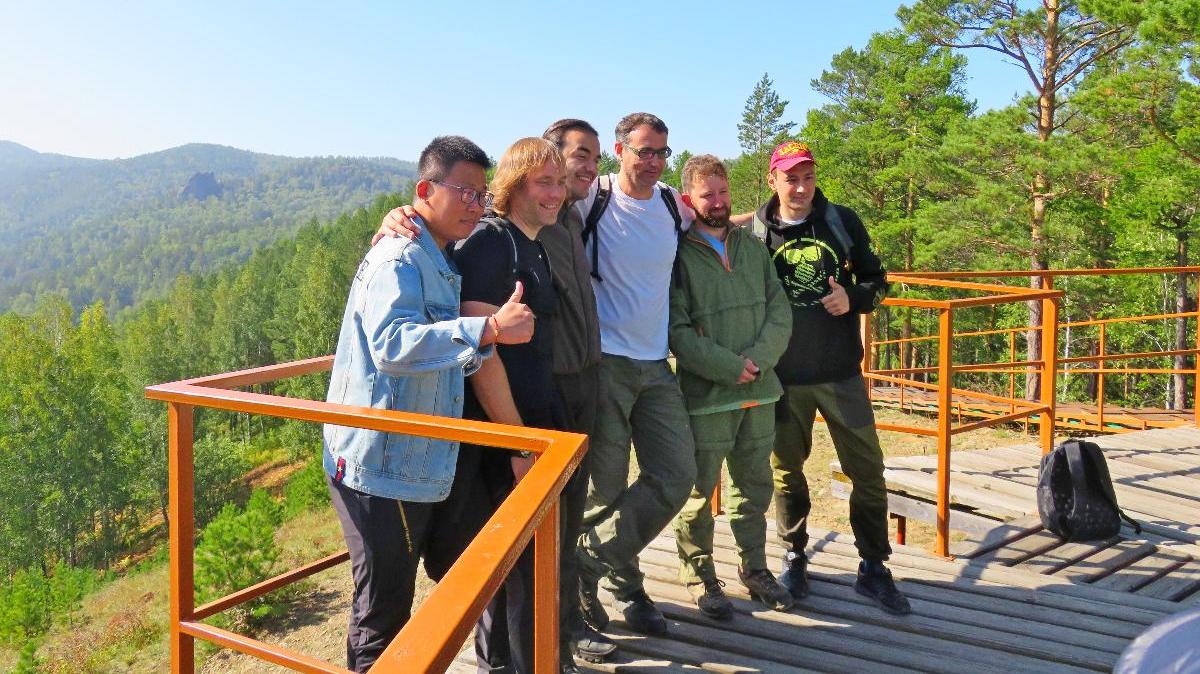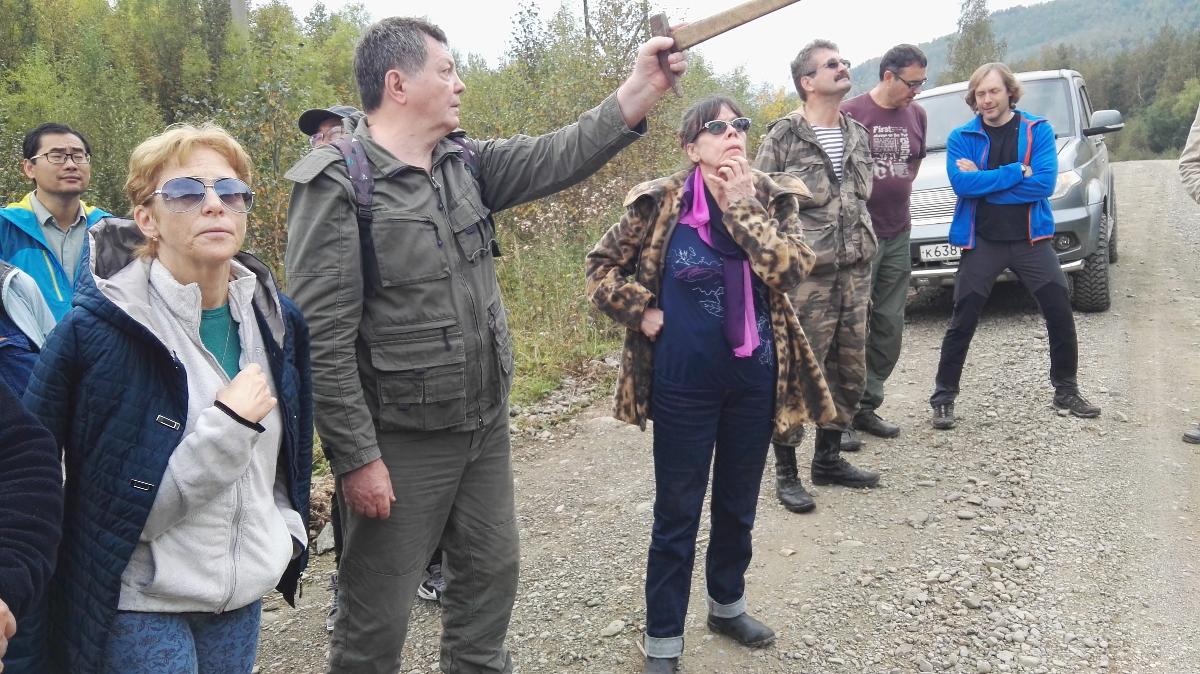The participants of the 7th international conference “Large Igneous Provinces through Earth History”, which was held at TSU in September, have carried out two expeditions. In Khakassia and the Krasnoyarsk Krai, they took samples that will be studied at various research centers. Analysis of the ancient igneous rocks will provide new data that will help to understand the formation of rare mineral deposits and the reasons for the mass extinction of species on the boundary of the Ordovician and Silurian more than 400 million years ago.
- The conference brought together major experts in geology, geochemistry, and reconstruction of the supercontinent. Most of the international scientists (there were more than 40 of them) were visiting Siberia for the first time, with a great professional interest in our region, so we organized two expeditions as part of the conference, - says Platon Tishin, Dean of the TSU Faculty of Geology and Geography. - The first expedition was to Khakassia, and experts from China took samples there. They are interested in the Early Devonian, the period when plants massively left the ocean and an outbreak of life occurred on Earth. It is in Khakassia where there are rock outcrops that store a lot of information about this era.
The second expedition brought together scientists from China, Morocco, the USA, England, South Africa, and Canada. They went to the Krasnoyarsk Krai, where the rocky outcrops of the Krasnoyarsk pillars are located and ancient volcanic rocks are exposed (in the area of the Biathlon Academy and the Krasnoyarsk hydroelectric station). The large igneous province (LIP) located there is a rare object: unlike most other LIPs on the planet, which are composed mainly of basalts, the composition of this LIP is significantly higher in silicon and potassium, approaching the composition of granites.
- All expedition participants showed great interest in this object. One scientist collected so many samples that he did not have enough money at the airport to pay for all the excess baggage, but a Canadian colleague came to the rescue, says Platon Tishin. - We need to find out why 400 million years ago, when active magmatic processes took place in the bowels of the Earth, in such rare places of the planet, as, for example, the Krasnoyarsk Krai, such non-standard LIPs were formed.
He says that deposits of diamonds, platinum, copper, and gold are mainly found in places where traditional LIPs are located. Provinces like the one located in the Krasnoyarsk Krai can contribute to the emergence of other extremely valuable resources - rare earth metals. They can provide a quick technological breakthrough in any area from electronics and space to alternative energy and the military-industrial complex. The research will provide geologists with the information they need to find rare earth metals.
- Our economy is changing very quickly. If a hundred years ago we were only interested in metals from iron and aluminum, now it’s the whole Mendeleev table, - said Academician Nikolai Dobretsov during the conference at TSU. - For example, in microcircuits, contacts oxidize quickly: while in space, many elements work for only two years, and we need them to work for a hundred years.
The LIP studied is also interesting for the causes of the mass death of some species and the appearance of others. Available data on granite provinces say that their formation was accompanied by large emissions of ash. Dense clouds moved over the planet for several thousand years, shielding the Earth from sunlight. Magmatic processes provoked volcanic winters, due to which most of the living organisms on the planet disappeared. An analysis of the samples taken by the expedition members will help to obtain data on what was happening at that time in the Earth’s atmosphere. Scientists will now research them and present their results at the next LIP conference in 2021, to be held in Morocco.



